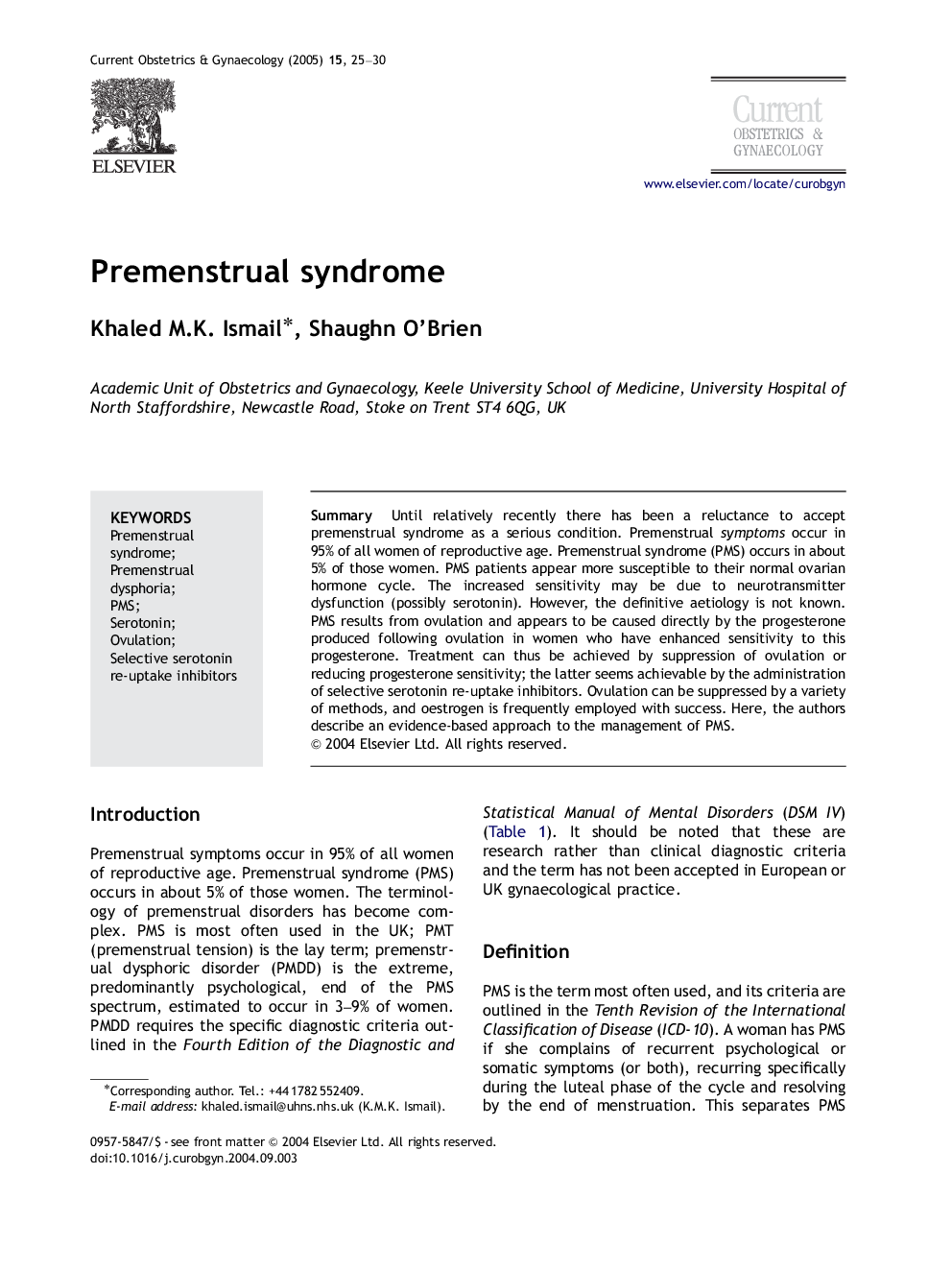| Article ID | Journal | Published Year | Pages | File Type |
|---|---|---|---|---|
| 9318420 | Current Obstetrics & Gynaecology | 2005 | 6 Pages |
Abstract
Until relatively recently there has been a reluctance to accept premenstrual syndrome as a serious condition. Premenstrual symptoms occur in 95% of all women of reproductive age. Premenstrual syndrome (PMS) occurs in about 5% of those women. PMS patients appear more susceptible to their normal ovarian hormone cycle. The increased sensitivity may be due to neurotransmitter dysfunction (possibly serotonin). However, the definitive aetiology is not known. PMS results from ovulation and appears to be caused directly by the progesterone produced following ovulation in women who have enhanced sensitivity to this progesterone. Treatment can thus be achieved by suppression of ovulation or reducing progesterone sensitivity; the latter seems achievable by the administration of selective serotonin re-uptake inhibitors. Ovulation can be suppressed by a variety of methods, and oestrogen is frequently employed with success. Here, the authors describe an evidence-based approach to the management of PMS.
Keywords
Related Topics
Health Sciences
Medicine and Dentistry
Obstetrics, Gynecology and Women's Health
Authors
Khaled M.K. Ismail, Shaughn O'Brien,
